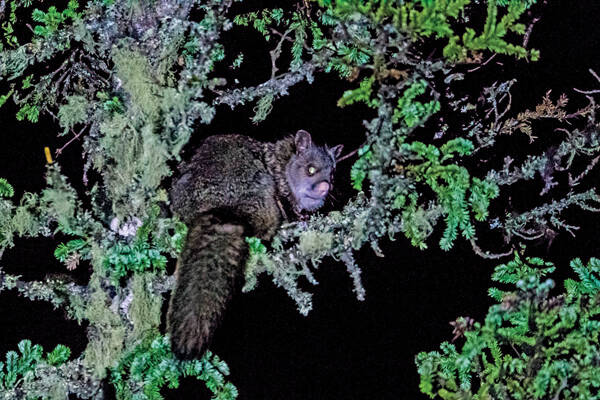Petaurista xanthotis
IUCN
LCBasic Information
Scientific classification
- name:Petaurista xanthotis
- Scientific Name:Petaurista xanthotis , Highland Flying Squirrel, Yellow-eared Flying Squirrel
- Outline:Rodents
- Family:Rodentia Sciuridae F.Squirrel
Vital signs
- length:350~430mm
- Weight:730~1200g
- lifetime:
Feature
The head is short and round, the tail is fluffy, thick and rudder-shaped, and its length is generally longer than the body.
Distribution and Habitat
It is endemic to the Hengduan Mountains. It is only distributed in Tibet, Yunnan, Sichuan, Gansu and other places.
It lives in subalpine coniferous forests or mixed coniferous and broad-leaved forests at an altitude of about 3000m.
Appearance
The eye sockets are light brown. The ears are slightly round, with black tips and yellow-brown outer parts at the base. The throat is grayish white, and the fur is soft and loose. The fur on the back is generally darker, with white to beige tips. The abdomen is generally light gray with white tips. The outer edge of the wing membrane is orange-yellow. The dorsum of the foot is slightly black. The tail is long and has long black hair.
Details
Gray flying squirrels are nocturnal and active at dawn and dusk. They live in subalpine coniferous forests or mixed coniferous and broad-leaved forests at an altitude of about 3,000 meters. They have strong gliding ability and usually build nests in tree holes of tall trees or rock holes higher than the ground. They also often build nests on oak trees. In Deqin, northwest Yunnan, the nest is built on a 20-meter-high yellow-backed oak. It is made of oak branches and pine branches, and is covered with moss, lichens, feathers and hay. The nest is spherical, about 15 meters above the ground, with the nest mouth facing upward. The outer diameter of the nest is 300mm, the wall thickness is 130mm, and the inner diameter is 170mm. The nesting materials are lichens, mosses and a small fibrous bark. The bottom of the nest is supported by branches of yellow-backed oak and Chinese pine.

Gray flying squirrels live alone or in pairs, hiding during the day and coming out at night. They hide in their nests during the day and move around at night. If frightened, they can glide to hide in dense bushes. They are most active at dawn and dusk. They can still move in winter and do not hibernate. They can still be found in Gansu in winter. They feed on fruits, seeds, young branches and leaves, buds, etc. of plants, and also eat insects.
Every spring is the breeding season for flying squirrels, and mating usually takes place from February to April. The estrus period of gray flying squirrels is generally 1 to 4 days, during which the genitals of both female and male mice are red and turned outward. They call and chase each other before mating, and then start mating later, usually mating several times in a row within a few hours. Fertilization can only occur if both parties cooperate well, otherwise biting may occur.
The gestation period of the gray flying squirrel is 70 to 90 days. Generally, one litter is born per year, with 1 to 4 pups per litter, and most of them are 2 pups. The birthing period of the gray flying squirrel is from May to July. Before giving birth, the female mice have swollen breasts and frequent urination. The birthing usually takes place at night.
The newborn pups are delicate and hairless, their eyes are not open, and they are sleepy. Generally, they open their eyes after 18 days of age and start to grow hair at 40 days of age. The lactation period is 30 to 40 days, and sometimes as long as 100 to 120 days. Generally, each mother can only breastfeed 2 pups. Gray flying squirrels have strong maternal instincts and love their pups very much. Pups under 3 months old are all raised by mothers.
Gray flying squirrels have thick and soft fur in winter. The leather board can be reinforced and used as decorative leather, but the yield is small. Its feces and urine are called "Wulingzhi". The Song Dynasty's "Kaibao Materia Medica" states that Wulingzhi has the effects of promoting blood circulation, removing blood stasis, regulating menstruation and relieving pain. It is mainly used to treat heart and abdominal pain caused by blood stasis, menstrual pain, postpartum abdominal pain, and pain caused by injuries. According to modern medical analysis, Wulingzhi contains vitamin A, resin, urea and uric acid, etc. It has different degrees of inhibitory effects on tuberculosis and various skin fungi in culture medium. Animal experiments have shown that it can also relieve smooth muscle spasms. It is clinically used to treat angina pectoris caused by coronary heart disease and has a certain effect.








